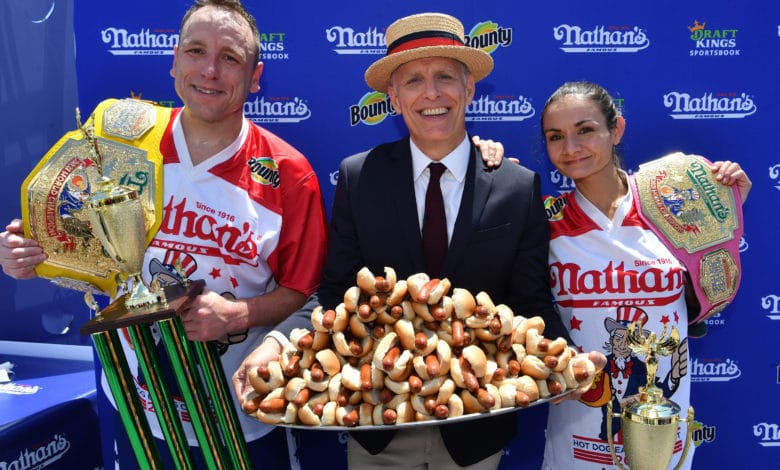Exploring Competitive Eating Beyond the Hot Dog Contests
Dive into the fascinating world of competitive eating, where athletes push the limits of gastronomic prowess in a variety of food challenges.

Introduction

Competitive eating, often regarded as a niche sport, has gained widespread popularity in recent years. In this article, we delve into the world of competitive eating beyond the realm of hot dog contests, exploring its history, techniques, and cultural significance.
Competitive Eating: A Brief History
Competitive eating traces its roots back to ancient times when food competitions were held as part of religious festivals and celebrations. In modern times, competitive eating gained prominence in the United States during the late 20th century, with iconic events such as the Nathan's Hot Dog Eating Contest capturing the public's imagination.
Beyond Hot Dog Contests: Exploring Culinary Challenges
While hot dog eating contests remain a staple of competitive eating, the sport has evolved to encompass a wide range of culinary challenges. From pizza and burger competitions to wing-eating contests and ice cream eating challenges, competitive eaters test their gastronomic limits in a variety of food categories.
The Rise of Competitive Eating Leagues
In recent years, competitive eating has become more organized, with the establishment of professional leagues and governing bodies. Organizations such as Major League Eating (MLE) oversee competitions, set rules and regulations, and recognize world records in various food categories.
Techniques and Strategies of Competitive Eating
Competitive eaters employ a variety of techniques and strategies to maximize their food consumption while minimizing discomfort and risk. These may include methods such as "chipmunking" (storing food in the cheeks) and "wet dunking" (dipping food in water to aid swallowing).
The Culture of Competitive Eating
Competitive eating has developed its own unique culture, with dedicated fans, media coverage, and celebrity competitors. Events are often accompanied by fanfare and spectacle, with contestants vying for cash prizes, sponsorship deals, and prestigious titles.
The Health and Safety of Competitive Eating
While competitive eating may seem like a lighthearted pastime, it raises important questions about the health and safety of participants. Overeating can pose risks such as choking, gastrointestinal distress, and obesity, prompting calls for responsible practices and oversight within the sport.
The Future of Competitive Eating
As competitive eating continues to evolve, it faces both opportunities and challenges. With growing interest from sponsors, media outlets, and fans, the sport has the potential to reach new heights of popularity while also addressing concerns about health, safety, and ethics.
Conclusion
In conclusion, competitive eating offers a fascinating glimpse into the intersection of sport, culture, and gastronomy. Beyond the iconic hot dog contests, competitive eating encompasses a diverse array of culinary challenges that push the boundaries of human consumption, captivating audiences around the world.
FAQs
- What is competitive eating?
- Competitive eating is a sport in which participants compete to consume large quantities of food within a set time limit.
- Are there different types of competitive eating contests?
- Yes, competitive eating contests cover a wide range of food categories, including hot dogs, pizza, burgers, wings, and ice cream, among others.
- How do competitive eaters prepare for contests?
- Competitive eaters often undergo rigorous training and preparation, including expanding stomach capacity, refining swallowing techniques, and improving overall physical fitness.
- What are some safety concerns associated with competitive eating?
- Overeating can pose risks such as choking, gastrointestinal distress, and obesity. It is important for participants to practice moderation and listen to their bodies during contests.
- Are there professional competitive eating leagues?
- Yes, organizations such as Major League Eating (MLE) oversee professional competitive eating competitions, set rules and regulations, and recognize world records in various food categories.
- Is competitive eating considered a legitimate sport?
- While opinions may vary, competitive eating has gained recognition as a legitimate sport, with organized competitions, professional athletes, and dedicated fans worldwide.